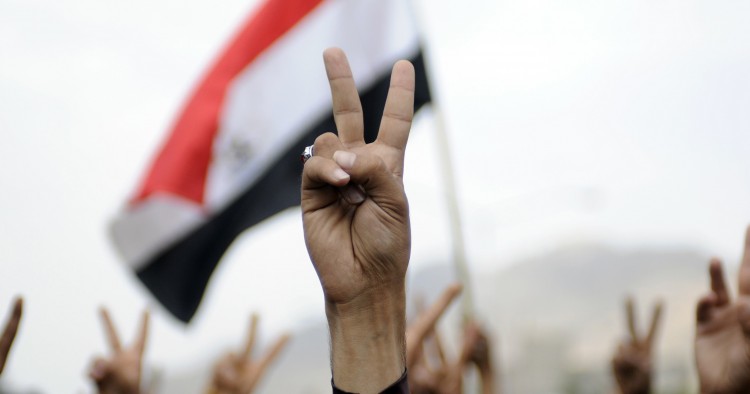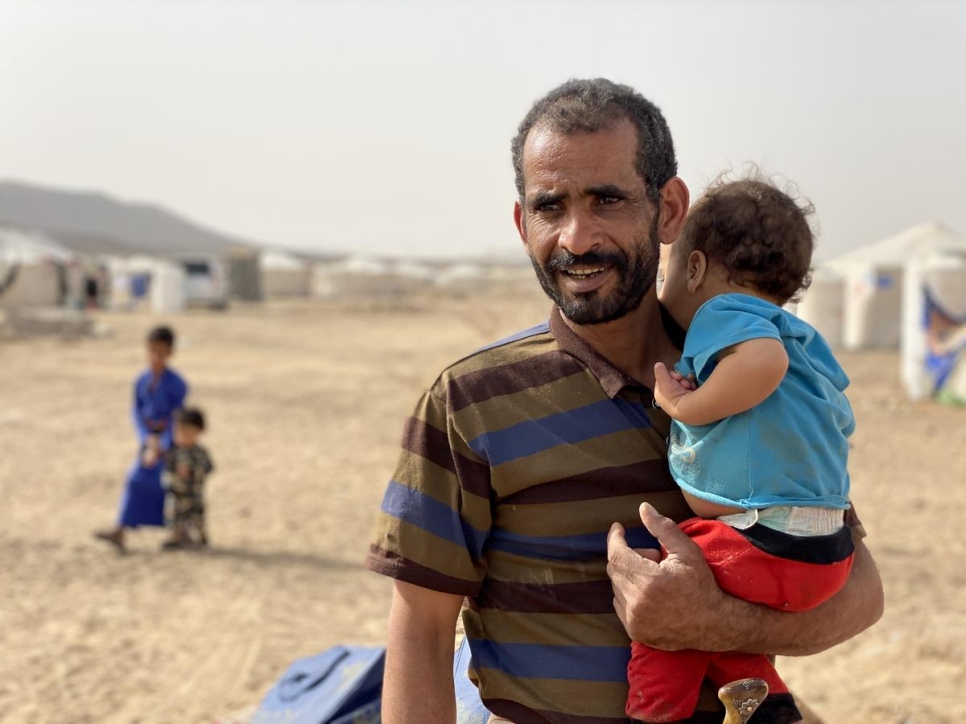ALYSSA BUMP
Assistant Life & Arts Editor

According to the UN Refugee Agency, Yemen is, “experiencing the world’s worst humanitarian crisis,” but what exactly is happening and how did it escalate to this point?
Yemen is home to 28.5 million people. It is located in the Middle East, south of Saudi Arabia.
Yemen used to be “the heart of Ancient Arabia,” but now, it is one of the poorest Middle Eastern countries.
How did the war start?
The Yemen crisis has recently gained attention from social media, despite the fact that the conflict has been ongoing since 2011.
It is important to note that this conflict is very complex. There are multiple players that each have their own agenda.
The Yemen war began during the Arab Spring of 2011, when Yemenis rose up against their president, Ali Abdullah Saleh.
Saleh was accused of causing widespread unemployment and partaking in government corruption.
The politically motivated Shia Muslim minority rebel group known as the Houthis (can also be spelled as Huthis) played a huge role in the takedown of Saleh.
These uprisings resulted in Saudi Arabia, one of the most influential countries in a group known as the Gulf Cooperation Council, stepping in.
The GCC is important because they oversaw the negotiations that resulted in Saleh’s resignation in 2012.
After Saleh’s resignation, his former vice president, Abd-Rabbu Mansour Hadi, became president.
Hadi’s presidency seemed to be a proper resolution at the time, but unfortunately, this change within Yemen’s government failed to fix the problems.
Between corruption, civil unrest, unruly violence and food insecurity, Hadi was doomed before he stepped up as president.
The government continued to lack stability, which resulted in other players, including Daesh and al Qaida, taking advantage of the civil unrest.
The Houthis began to rebel against the government once again in 2014 due to the continued chaos.
Escalation of the conflict
This was when a shocking twist took place: the Houthis joined forces with their once sworn enemy, Saleh’s allies. Saleh, the former president, still had allies and active forces in the military.
The Houthis gained much more power and leverage through combining forces with Saleh.
Together, they took over Yemen’s capital, Sanaa, in 2014.
This advancement led to President Hadi fleeing to Saudia Arabia.
It also resulted in Saudia Arabia becoming further involved, because it was speculated that the biggest Shia power, Iran, backed the Houthis.
Iran denies supporting the Houthis militarily, but Saudi Arabia and others believe otherwise.
Since the Houthis took over Sanaa, they were inevitably getting closer to the Saudia Arabia border, and because they were thought to be backed by Iran, they were seen as a threat.
So the Saudis, United Arab Emirates and many other countries joined together in a coalition to put Hadi back in power.
This was when things began to dramatically escalate.
In March 2015, Saudi Arabia began using air strikes against the Houthis. This decision was backed by the United States, United Kingdom and France.
The United States began to supply Saudi Arabia with billions of dollars worth of weapons, and they specifically targeted al Qaida and Daesh.
The Saudis used an abundance of air strikes in hopes of driving the Houthis away, which was supposed to result in the restoration of Yemen’s government.
The air strikes were also meant to attack Iran and prevent them from getting too close to Saudi Arabia’s southern border.
Over 19,000 air strike attacks have been released in Yemen in the last four years. Over a third of these air strikes have targeted “non-military zones” where marketplaces, schools and hospitals reside.
These types of attacks are banned by international law.
These bombings have killed thousands of innocent Yemeni civilians.
However, the increased violence and warfare is not the only reason Yemenis are suffering.
In 2015, the Saudi-led coalition created land, sea and air barriers.
These barriers made it nearly impossible for any aid, which the civilians desperately needed, to get into Yemen.
The schism between the Houthis and Saleh’s allies
Saleh, who was once allied with the Houthis, switched his stance on live television in 2017, saying that he wanted to talk to the Saudi-led coalition to hopefully find a peaceful resolution.
Two days later, he was killed by the Houthis because they viewed his statement as treacherous.
This decision resulted in the Houthi and Saleh alliance breaking apart in 2017 after fighting the Saudi-led forces for three years.
Saleh’s supporters became anti-Houthi after the assassination of Saleh.
The Houthis still control Sanaa, but many believe it’s because of the militaristic support they receive from Iran.
The players, their agendas and their war crimes
This is why the Yemen conflict is so complicated: there are two powerful rivals, Saudia Arabia and Iran, backing opposing sides in a foreign war.
Saudi Arabia and Iran are using this war to fight against each other while simultaneously worsening Yemen’s conflict.
Not to mention the United States, United Kingdom and France have all been involved through supplying weapons and logistical support to the Saudi-led coalition.
Yemen’s own armed groups, including the Houthis, Daesh and al Qaida have also continued to complicate things.
Experts have said each side and player have their own individual agendas, and they have all been accused of violating humanitarian and international law.
According to the Amnesty International report on Yemen in 2019, “the Houthis have shelled residential neighborhoods in Yemen and launched missiles indiscriminately into Saudia Arabia.”
As for the coalition led by Saudia Arabia, the report says they, “continued to bomb civilian infrastructure and carry out indiscriminate attacks, killing and injuring hundreds of civilians.”
The United States is guilty as well. They have created weapons that have been used to kill innocent civilians.
Sexual violence against children has also become a huge issue in Yemen. Since the institutions that are meant to help protect civilians have been destroyed, many children are left vulnerable to this type of abuse.
Some families have attempted to receive justice, but they have been forced to pay out of pocket for medical reports, which they can’t afford.
Others fear to report sexual violence because of the local militias. Some families have even had to relocate for their safety.
Women and girls are also unprotected against gender-based violence and forced marriage.
Even before the war started, women were unable to access their family’s finances.
It was also much more difficult for women to have access to education and health services.
Since the war started, assaults and abuse against women have increased 63 percent according to the UN.
Yemen has even been named, “one of the worst places in the world to be a woman.”
Over 36 percent of girls are missing school, and previous proposed laws that would have set the minimum age for marriage to 18 have been abandoned.
In the last four years, forced and early marriage of girls has tripled.
The damaging consequences

The combined death toll between war, disease and malnutrition was 230,000 by the end of 2019, according to a report from the UN.
It is estimated that every 12 minutes, a child dies in Yemen.
Eighty percent of Yemen’s current population is in need of humanitarian assistance, and over 12 million of them are children.
About 8.4 million people are at risk of starvation. Severe malnutrition threatens the lives of 400,000 children under the age of five.
Because of the unsanitary conditions, many Yemenis develop cholera, an intestinal disease caused by bacteria found in contaminated food and water.
Since many people in Yemen don’t have access to clean water or sanitation, cholera can be fatal.
Cholera is known to dehydrate people rapidly due to continued vomiting and diarrhea. These symptoms further worsen Yemenis’ health, especially if they are already weakened by malnutrition.
Only half of Yemen’s health facilities are still functional, and almost all of them lack essential equipment to help treat patients.
Coronavirus is just another obstacle the people in Yemen are forced to face.
Before the virus, around two million children did not attend school. Now, 7.8 million children have no access to education.
Amnesty International’s Middle East Campaigns Director, Samah Hadid, said, “After four years of bloodshed in the Arab world’s poorest country, Yemenis can no longer bear the catastrophic humanitarian impact of the war.”
The people that are suffering the most are innocent and powerless Yemeni civilians.
Head of Amnesty International’s UN Office in New York, Sherine Tadros, said, “the system is failing to protect children in armed conflict. Instead, these children have become a bargaining chip in wider political discussions.”
How you can help
Carrd link:
Yemen crisis- Information, donation links, fundraisers, petitions and other ways to help
Donation links:
Just Giving- Let’s save Yemen together
Rescue.org- Donation link and information
Save the Children- Donation link and information
Oxfam- Donation link and information
Just Giving- Emergency Yemen appeal
UNICEF- Donation link and information
Just Giving- Emergency Yemen appeal
Petitions:
Oxfam- Act now to save lives in Yemen Change.org- Stop the war and end the famine in Yemen
